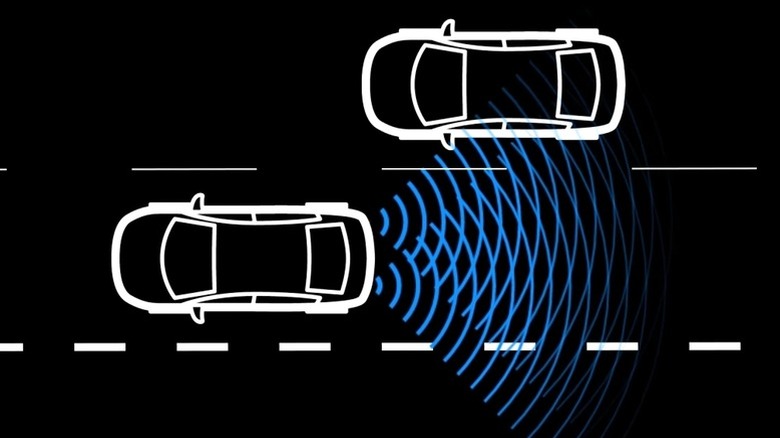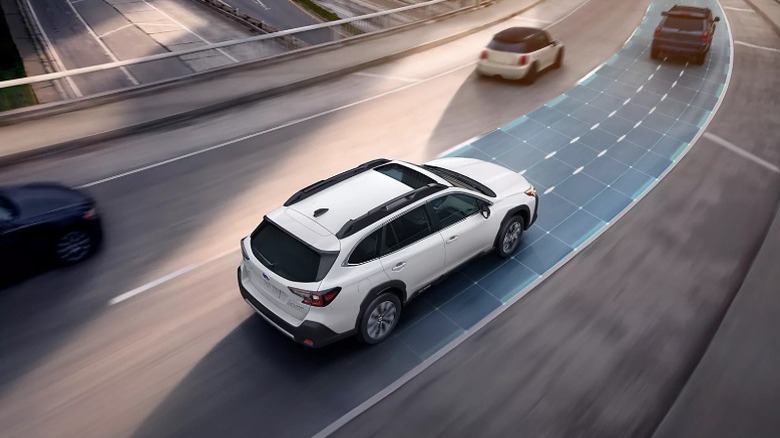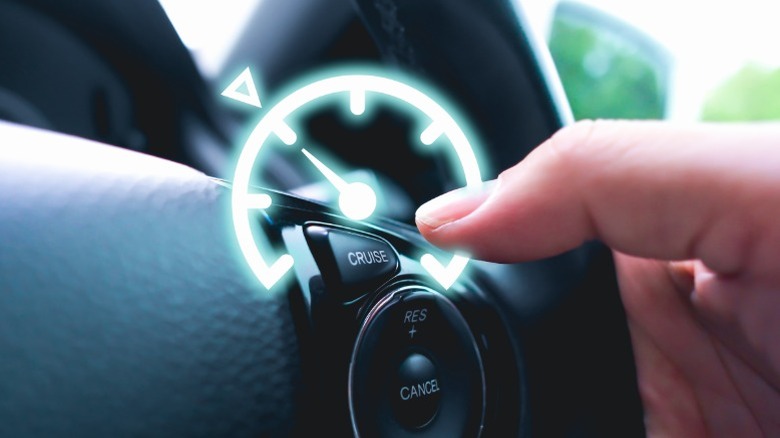5 Innovative Vehicle Safety Features To Consider For Your Next Car
Safety is a paramount issue when it comes to cars. As awesome as they are, cars require some skill to drive, and in the worst cases, accidents can be deadly. The World Health Organization estimates that more than a million people die yearly from road traffic accidents, and up to 50 million people suffer injuries. In the U.S. alone, there were 6.7 million car crashes in 2019 and more than 36,000 deaths. So, safety features aren't just fancy stuff. They mitigate automotive hazards.
Vehicle safety systems have improved over the decades, from seatbelts and airbags, which became mainstream in the 1960s and 1970s, to the advanced driver assistance systems that now dominate the market. Today's cars are much safer than their older counterparts. The IIHS acknowledged that improvements in safety features and structural designs substantially reduce safety risks and accident-related deaths. Here are five innovative vehicle safety features to consider for your next car.
Forward collision warning
As the name suggests, Forward Collision Warning (FCW) prevents collisions with oncoming objects by issuing alerts when it detects a potential crash. According to the IIHS, in 2023, front-impact collisions caused 60% of passenger vehicle occupant deaths. The organization also found in 2017 that cars equipped with forward collision warning systems had 17% fewer rear-end crashes and 30% fewer crashes resulting in injuries. So it's no surprise that nearly every modern car today comes with forward collision warning.
FCW primarily uses sensors, but manufacturers build these systems differently. While some cars use radar waves, others are camera-based systems that incorporate image recognition. Either way, an FCW system will alert the driver through audio, visual, or sensory means when there's a likelihood of collision. You should also bear in mind that some systems require the car to be traveling at a moderate speed to work, while others work well regardless of speed.
Although FCW has been in existence for the past 2 decades, it didn't become mainstream until the 2010s. Today, very few cars lack this feature, but some entry-level models, such as the Jeep Wrangler Sport, still don't offer this feature as standard.
Blind spot warning
Car mirrors can only reveal so much of your environment. There will almost always be areas that are out of your vision when driving, and this is where blind-spot collision warning systems step in to help.
Blind spot warning uses sensors, and in some cases, ultrasonic waves and cameras to cover those spots you can't see. The devices are usually placed in the rear bumper. When the system detects a vehicle approaching, it signals the driver to avoid a collision. It's important to note that this technology is primarily built to detect cars, so it's not as effective with bicycles, motorcycles, and scooters. Still, it's a really useful feature. According to the IIHS, blind spot warning reduces lane-change crashes by 14% and injuries caused by lane-change crashes by 23%. This means that this technology will prevent thousands of injuries.
Most automakers in America offer this feature on modern cars, although it is often marketed with different names. For instance, Chevrolet and GMC call it the "Side Blind Zone Alert", whereas Mercedes-Benz refers to it as "Blind Spot Assist".
Lane keeping assist
Lane-keeping assist technology dates back to the 2000s, when it first appeared on the Mercedes Actros. The main function of this system is to keep your vehicle in the correct lane while driving. Typically, it works with cameras mounted on the car mirrors or the windshield. The cameras detect the lane markings on the road and detect the car's movement in reaction to the lane markers. If the car moves too close or crosses the lane marking, the system alerts the driver.
Lane keeping assist may not seem like a big deal at first, but it is extremely helpful in maintaining control during moments of brief distraction or fatigue. It's also a great feature for new and inexperienced drivers as it helps them stay alert and safe. According to the IIHS, lane keeping assist could help reduce as many as 23% of fatal crashes. You, however, need to bear in mind that the effectiveness of this system is also influenced by the state of the road, as well as weather conditions such as snow and dust.
Automatic emergency braking
Unlike most safety warning features, automatic emergency braking (AEB) isn't merely an alert system; It actively prevents accidents by applying the brakes for you when the situation demands it. Thus, it's pretty effective in preventing or at least reducing the severity of road accidents. A 2017 study revealed that low-speed AEB systems reduce front-to-rear crashes by 43%, while crashes resulting in injury are reduced by 45%.
Automatic emergency braking systems often involve a combination of technologies, including cameras and radars. When it detects a potential collision based on the information it has gathered, it issues a warning to the driver, and a failure to react adequately will activate the braking system. The brake force applied depends on the situation and hazard at hand, but it may also vary by car brand and technology. Although nearly all new cars today come with automatic emergency braking, the NHTSA has stated that, starting from 2029, all passenger cars must be equipped with a compliant AEB system. This is expected to save hundreds of lives each year.
Adaptive cruise control
Adaptive cruise control makes driving not just safer, but easier. This assistive feature helps maintain a reasonable speed and pace while driving by controlling the car's brake and accelerator. It is sometimes referred to as Dynamic Cruise Control or Automatic Cruise Control.
When Adaptive cruise control is active, it monitors the distance between your car and surrounding cars or objects, and can maintain and make adjustments to the car's speed while in motion. This is unlike traditional cruise control, which you need to manually adjust to various speeds. In some cars, the ACC system also incorporates automatic stop-and-go technology, which can bring your car to a complete stop if, for instance, there is heavy traffic, and then independently restart the vehicle when movement continues.
The most obvious benefit of adaptive cruise control is that it takes some weight off your shoulders, making driving a lot more convenient. However, it can also ensure the car stays within legal speed limits, thereby enhancing safety and preventing accidents.





